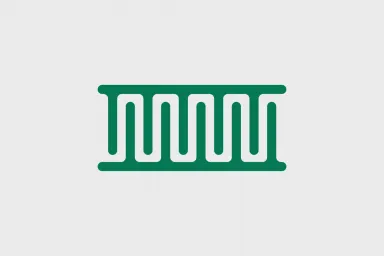
Technical Papers & Patents
Get an insight into the patented technology we develop through our technical publications
SAW Technology
Questions and answers on our patented Transense Torque and Temperature sensors
The actual SAW torque sensor package is approximately 8x6mm with a 2mm thickness.
An overall torque accuracy with an error of better than 1% full scale can be achieved.
Excluding passive components, and voltage regulators, there are 2 key components on the SAW reader electronics printed circuit board (PCB). These are the Radio Frequency Application Specific Integrated Circuit (RF ASIC) and the Digital Signal Processor (DSP). These components are 7x7mm and 14x14mm respectively. The electronics may be supplied as a standalone PCB or integrated into the customers electronics. The small size of the electronics also enables them to be integrated into different form factors.
Our standard operating temperature range for the torque and temperature sensor is from -40⁰C to 125⁰C. In some applications extending the upper limit to 150⁰C may be possible.
Unlike magnetic technology torque sensors the Transense SAW torque and power measurement sensor is not affected by mechanical shock or vibration.
Unlike some optical torque sensors SAW torque sensors are not affected by dust and may also be used in a liquid environment such as transmission oil. The torque sensors are also very rugged and have exceeded expectations when qualified for use within military aircraft applications.
The Transense Torque sensors are suited well for Electric Power Assisted Steering (EPAS) systems because of their torsional stiffness, small size, batteryless and wireless benefits. With the exception of 2 small flat spots on the shaft to accommodate the sensing elements, no other mechanical structures are required. SAW torque sensors are very sensitive to strain, non-compliant and do not require expensive torsion bars. This enables the use of a far less complex and lower cost mechanical design, a significant advantage over Hall effect and optical sensors. Vehicles with EPAS systems installed reportedly see a better fuel economy due to decreased loss of engine power. CAN outputs can be provided to send signals to an ECU. See SAW in Electric Motors for vehicles and eVTOL
Torque Sensors (or Torque Transducers), measure torque in a variety of methods. The basic principle is, in essence, a very simple mechanical process, it is a measure of the “force” being used (or attempting) to turn an element. When a force of “torque” is applied to a shaft, the shaft twists (by a very small amount). The Transense torque sensor is a non-compliant sensor that measures minute changes in surface strain using Surface Acoustic Wave (SAW) technology. Please see a video explaining the principle of operation at Surface Acoustic Waves - An Introduction by Dr. Victor Kalinin of Transense Technologies plc and also a short brief at SAW Technology and Torque Sensor Measurement
Yes, the Transense torque sensor has been designed to measure dynamic and static torque without the need for batteries on the shaft, energy harvesting or inductive coupling.
Unlike some torque measurement sensors, SAW sensor technology is not affected by magnetic fields.

Get an insight into the patented technology we develop through our technical publications

Read further about the benefits of SAW Sensor Technology and how it compares to competing technologies